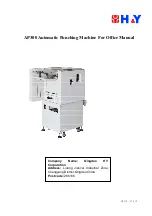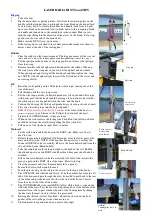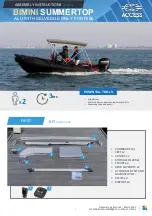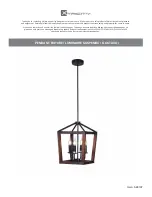
Hazardous Chemical
Maintenance Precaution
Personal Protective Equipment
This manual can only give general suggestions for personal protective equipment (PPE), which protects
the wearer from hazardous substances. Refer to the Material Safety Data Sheets (MSDSs) of the
chemicals handled in your laboratory for advice on specific hazards or additional equipment.
•
Eye Protection
— The type of eye protection required depends on the hazard. For most situations,
safety glasses with side shields are adequate. Where there is a risk of splashing chemicals, goggles
are required.
•
Protective Clothing
— When the possibility of chemical contamination exists, protective clothing
that resists physical and chemical hazards should be worn over street clothes. Lab coats are
appropriate for minor chemical splashes and solids contamination, while plastic or rubber aprons
are best for protection from corrosive or irritating liquids.
WARNING
Samples, consumables, reactors and filters filling materials might contain toxic,
carcinogenic, mutagenic, or corrosive/irritant chemicals. Avoid exposure to potentially harmful
materials. Always wear protective clothing, gloves, mask, and safety glasses when you handle
consumables, reactors and filters filling materials and during the cleaning of the MAS Plus’s piston
and the remotion of the ashes from the crucible when used.
Also contain waste streams and use proper ventilation. Refer to our supplier's Material Safety Data
Sheet (MSDS) for proper handling of a particular compound.
CAUTION
Always use original Thermo Fisher Scientific materials and products. The use of
materials not meeting the technical specifications of our products does not ensure a good operation
of the instrument and may even damage it.
WARNING
When, for technical reasons, it is necessary to work on instrument parts which might
involve an hazard (moving parts, components under voltage, and so on), the authorized Technical
Service must be contacted. This type of situations can be identified because access to these parts is
possible only by using a tool. The removable protective covers bear a warning symbol suggesting to
refer to the documentation accompanying the instrument. When a maintenance operation is
performed, the operator must have received proper training to carry out specific actions.
CAUTION
When the instrument is switched off, consider that its does not cool down immediately,
but heat tends to concentration in the upper part of the furnaces area. It should be made clear that
it is better to cool down the furnaces first before switching off the instrument. Switching it off
means that the fan in the back does not remove the hot air concentrating at the top and the surface
thus becomes very hot. The openings provided for the chamber aeration will cause a slow cooling
of the same, which however, in the vicinity of the areas marked with the symbol “hot surfaces”,
might even reach temperatures higher than ambient temperature. Therefore in the minutes
immediately following the instrument switching off, the operator must consider this risk and pay
adequate attention during any maintenance operations following the use of the instrument.
















































